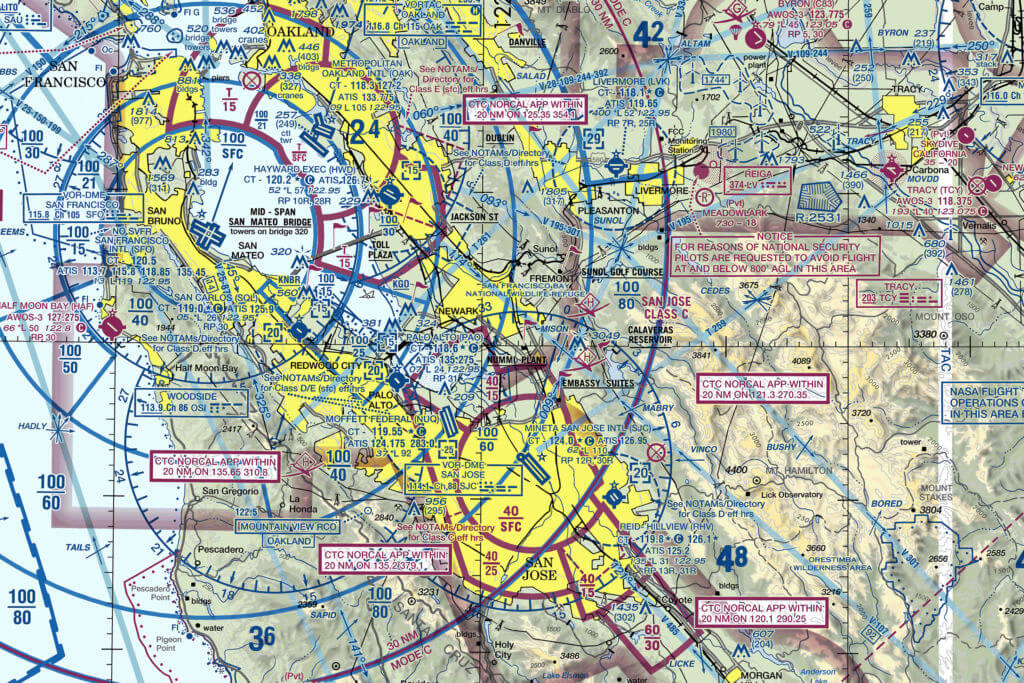I PASSED PART 107, PART 2: 6 Must-Do Study Tactics from a Certified Flight Instructor
This is the second in a series of articles on Part 107 and complying with FAA regulations. Check out Part 1 and subscribe to our blog to get automatically updated when the next one is published!
This week, our guest blogger is Gil Aguilar, a certified flight instructor and sUAS operations expert who performs weekly sUAS operations in the San Francisco Bay Area. His unique take on the test is gleaned from years of teaching and flying manned aircraft.

The Art of Passing FAA Examinations
I’ve been flying for 20 years, with 2,000 hours in manned aircraft, 400 hours flying drones, and 600 hours instructing student pilots in the air and in the classroom. Three weeks ago we started our first Part 107 class with 15 students, with a 100% success rate. I’ve been through the entire 333 exemption process and received my 333 exemption in 2015. I received my Part 107 certification on August 29th, the first day the test was available. I’ve mastered the art of passing FAA examinations. They are not easy, and passing requires patience and effort.
The best pilot I've ever met was a young man. He seemed to know everything. Any question, he had the answer, the correct answer. He is a walking aviation encyclopedia. I asked him one day what was his secret. “Simple”, he responded. “I study every day, even if I picked up that same book a hundred times, I read it again and again.” Follow along with my 6 must-do tactics below and I'll teach you how to become this good yourself, and pass on the first try.
1) Use Free Resources
Drones are more than the next burrito delivery method. The test exists to ensure you know the limitations of being a Remote Pilot and that you have a minimum level of knowledge to conduct operations safely – it is that simple.
To that end, the FAA has made available multiple, freely accessible resources that will help you build a body of knowledge to draw from on the day of the big test.
To begin with, get familiar with these downloadable FAA publications: Remote Pilot Knowledge Test Guide; Remote Pilot Study Guide; Unmanned Aircraft General Sample Exam; Airman Knowledge Test Supplement; Advisory Circular AC 107-2; and the Pilot’s Handbook of Aeronautical Knowledge. These publications enable you to learn from the experience of others – not just the recent wisdom gained from drone operators but decades of manned aircraft piloting experience.
2) Knowledge of Manned Aircraft Operations Is HUGE

While most Part 107 seekers may not want to move on to manned aircraft operations, you do have to share the sky with them and the FAA will test your ability to do that.
With that in mind, here are suggestions on what areas to study to maximize your chance of a well-deserved passing score: Part 107 Regulations, the National Airspace System, Weather, and Operations. Here are some good example focus areas:
Part 107
Can you fly at night under Part 107? When does night legally begin?
National Airspace System
There is a dashed magenta circle on an aeronautical chart that surrounds an airport within the area that you intend to operate at, is this controlled airspace? at the surface?
Weather
What does “22012G25” mean in a METAR? What is a METAR? How about “BECMG” or “PROB” in a TAF? A TAF is indicating “FM051600 09030KT P6SM VCTS SCT025CB BKN050”, what is VCTS? How does that impact our flight operations? What are the safety concerns?
If you do not know the answers to these types of questions, you have some studying ahead of you. If you are really strong on knowledge of aeronautical charts, their symbols, and their meaning, weather patterns, and the rules of controlled airspace, you will have a good chance of passing.
3) Don’t Just Memorize, Know the “Why”

Of the six tips, this will get you the most bang for your buck. Here’s what you do: download or print the Unmanned Aircraft General Sample Exam and the Airman Knowledge Testing Supplement, then grab a highlighter (digital or physical - your choice). Go through each question one by one and determine what the correct answer is and highlight with your favorite color. Then do the most important step:
Write a note next to the question and answer the “why” for your answer.
Why is the “why” so important? Because the FAA test is designed to ensure you know what to do in the heat of the moment, out in the field. Aircraft fly fast and you need to react quickly to avoid a hazardous situation. Strictly memorizing practice questions won’t help you make the right decision out in the field. So study the “why” in order to get the best foundation of your knowledge and become the most effective remote pilot in the world.
Here is a good example of how to approach learning the "why":
For a question about METARs (weather reports), the answer might be: “KNZY 061852Z 30011KT 10SM”. In your “Why” note, write out “300 is the wind direction, METARs give the wind direction relative to true north, wind speed is measured in knots and the speed here is 11 knots."
While at first glance it will only seem that the purpose of this exercise is for you to decode the FAA questions. But the real purpose is that it teaches you how search for the answer in an active way, it engages you to use the reference materials, and it requires that you write out the answer in paragraph form – your retention will much greater, and at a higher level, than just circling the correct answer.
4) Go “Chart Surfing”

Get a copy of a current “Sectional” aeronautical chart and go “chart surfing.” You can download them from the FAA here. Make sure you are able to place your finger on a random place on the chart anywhere and be able to determine if at the surface the airspace is controlled or uncontrolled and what is the class of airspace (such as B, C, D, E or G).
Determine what are the altitudes that airspace covers, such as 700’ AGL, 1,200’ AGL, or something else. Then find the nearest airport symbol and determine if it has a control tower or not and what frequencies are used for communication. This is chart surfing. Be able to explain the meaning of all the symbols across the map. Write on the chart, “Class G extends to 700’ AGL here”, “Class C from the surface to 4,000’ MSL”, “CTAF is 122.8” and so on.
5) Create Your Own Questions
Go to the FAA’s website at http://www.ecfr.gov and search for Part 107. Read each regulation and write a question and an answer for yourself. For example, Part 107.39:
Question: “Under what conditions can a small unmanned aircraft be operated over human beings?”
Answer: “Only if that person is directly participating in the operation or located under a covered structure or inside a stationary vehicle that can provide reasonable protection from a falling small unmanned aircraft.”
Tedious? Perhaps. But the effort is worth the reward, and you can have fun with it! You’ll find yourself soon becoming an expert.
6) Never Stop
Just like the best pilot I've ever met, you should aim to never stop learning. Even glancing at your materials one extra time per week, while you're zoning out in front of Netflix will give you an edge up to the next level. And here is the good news: the more you do it the easier it gets, just like exercise.
I followed these 6 must-do study tactics, and I passed my Part 107 on the first try. You can do it too. Remember, the test is harder than you think and second, your score will be proportional to the amount of effort you give it. You can do it! The drone industry is just kicking off, and you don’t want to be left behind by not being certified. Sign up for the test, start hitting the books, and get ready to start flying like a pro.
Got any questions about the test? Throw your questions in the comments section, or email us at support@skycatch.com.
Have your certificate and want to get into the drone data business? Sign up for a free trial with Skycatch now and start mapping today – no credit card required.
Gil Aguilar is a Certificated Flight Instructor with airplane, instrument, and multiengine ratings including a Part 107 Remote Pilot Certificate and holds a master's degree from Embry-Riddle Aeronautical University. He is actively involved in commercial sUAS Operations and Training.



